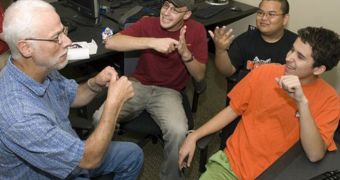New studies have revealed that the vast majority of parents to deaf children do not learn to become fluid in sign language. Their proportion can reach about 75 percent, which means that their children do not get the appropriate amount of communication at home.
No one can blame the parents though, given the difficulty of learning American Sign Language (ASL). Experts say that studying it is equivalent to a native English speaker learning Japanese from scracth.
As such, even though most parents do learn ASL, 75 percent of them never become fluent in communicating with their kids using it. This situation is catastrophic, researchers say.
“So that means only 25 percent of the kids are really getting good sign language at home. They're so behind in learning the language that they're not really learning the lessons in school,” explains scientist Thad Starner.
The expert holds an appointment as a computer scientist and professor at the Georgia Institute of Technology (Georgia Tech). He is one of the experts behind interactive software such as CopyCat.
These are programs that allow young deaf children to learn ASL with relative ease, by mimicking what goes on on the screen in front of them. Such tools make learning sign language easier.
Starner's efforts were supported with grant money from the US National Science Foundation (NSF) and the Department of Education (DE) Institute of Education Sciences.
Another software the expert helped develop is called “SmartSign,” and is basically a phone application that allows people who get jammed on signing a word to get the hints they need.
Users simply speak the word they forgot how to sign into the mouthpiece, and then a person appears on their phone screen, signing the word the users were looking for.
Parents who have had a chance to use SmartSign say that this is of great use to them. It allows them to get past temporary memory lapses, and avoid leaving their kids with an interrogatory expression on their faces.
The truth is that, no matter how many of these children there are, people prefer to turn a blind eye to them. This is also true for many research agencies and governments.
But some investigators soldier on, producing innovation that at least improve the life of deaf people considerably by taking care of the little things.
Further improvements in the software are expected to take place soon, and the NSF will continue to support this line of research.

 14 DAY TRIAL //
14 DAY TRIAL //